I'm Morgan Jackson, a PhD Candidate at the University of Guelph. Watch for updates from my PhD research on fly biodiversity, as well as various thoughts, opinions and ideas about taxonomy, biodiversity and academia.
Don't wanna be here? Send us removal request.
Photo
#Winning
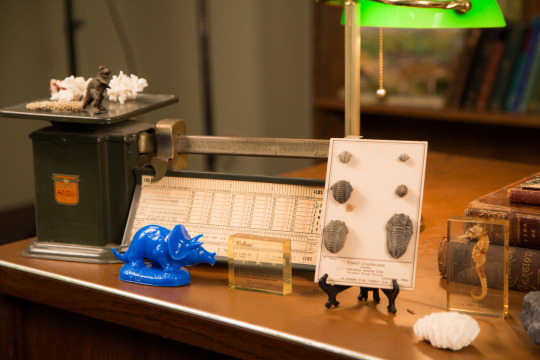
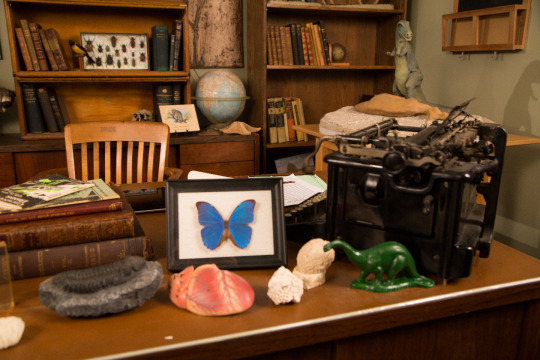

We spent a few months amassing a small collection of museum specimens from the different areas and offices around the building, for display on the set of our new program, Natural News from The Field Museum which launches September 14th! In a few weeks we’ll share a video talking about more of these objects in detail, but in the meantime:
I spy Triceratops, blue as can be- A -morpho in glass, Apatosaurus in green Some corals, a seahorse – tiny ear bones between And a raccoon painting, just barely seen.
I spy two ancient horses, a globe near some books- A fossilized pine cone, a hominid skull in a nook. I spy the trilobites: seven in all One is gigantic, six others are small.
I spy a human heart, modeled in plastic A Gorgosaurus posed to eat (it’s my favorite; fantastic) A typewriter with margins set to print labels And a handful of pamphlets for display on the table.
I spy adventure, excitement and knowledge A collection of wonder and more things to acknowledge. I wrote this for you in the hopes you’ll stay tuned For our new program which I’m so thrilled is launching SOON!
:D
345 notes
·
View notes
Photo
Well, that’s my favourite thing of the day done and sorted


Phoebe Snetsinger: woman who listed more than 8,000 bird species celebrated in today’s Google Doodle | The Independent
Phoebe Snetsinger, the inspiration for a new Google Doodle, was the woman who made her life’s work of documenting more than 8,300 bird species - the first person to do so. The 9th June 2016 would have been her 85th birthday.
Yet it was only just before her 50th birthday, when she was diagnosed with cancer, that the bored and frustrated housewife turned her pastime of bird-watching into an all-consuming obsession.
The Google Doodle comes at a time when there is growing interest from girls and women in birding. A new Facebook group called World Girl Birders has more than 1,900 members.
But in 1981, the bird-watching community was male-dominated. But that didn’t stop Ms Snetsinger, the author of her memoir: “Birding on Borrowed Time”, when she was told she had a “fatal” melanoma and she had less than a year to live, of setting out to see the world.
Her first tour after the diagnosis was in Alaska. She then traveled across all seven continents, aided by her late father’s inheritance, to document the world’s birds. During a three-week trip in Kenya, she saw 500 different bird species. There are now around 10,000 bird species, according to the American Birding Association.
Tony Bennett, who led Ms Snetsinger on her first ever birding tour of Northern Mexico, told The Independent that she was a “consummate craftsman of bird-watching” and that she was never to be seen without her binoculars or telescope. “Bang, she had a scope on that bird before anyone had a scope to their face,” he said. “She was intense, and knowledgable. She was the most interesting person I have ever met.“
83 notes
·
View notes
Photo
#SaddestGIF

Sooooo I also found this headless Narceus millipede that had been decapitated by a Phengodid beetle larva. It must have been recent, as the legs were still moving and the heart pumping.
40 notes
·
View notes
Photo

Scorpion questions? LET’S DO THIS. Arachnology curator Lauren Esposito hits the AnswerTime scene tomorrow (June 3) at 10 am Pacific/1 pm Eastern to take your Qs about scorpions, spiders, amblypygids, insect diversity, & everything in between. Warning: She’s on a mission to win hearts & minds for the things that make you shudder.
942 notes
·
View notes
Link
You can read the NSF’s (very small) comment about the situation here. Hopefully collections that depend on this funding can survive until 2018 when the next round of money is set to be doled out to successful applicants.
http://www.nsf.gov/dir/index.jsp?org=BIO
Good news! The National Science Foundation will be re-implementing the program which provides financial support to biological collections. The Collections in Support of Biological Research (CSBR) program was put on a temporary hiatus earlier this Spring, a decision that was met with a great deal of criticism from the natural history community.
While I can’t find anything official from the NSF, this Nature article has said the ongoing evaluation of the program will continue through November of this year, and that the NSF will be accepting new proposals in September 2017.
If you’re wondering wtf I’m talking about read a summary and my statement in support of continuing the CSBR program here, and an article I’m quoted in by Ed Yong from March.
128 notes
·
View notes
Text
Can confirm.
Best week on snapchat for sure
I’ve sent a lot of snap chats on rave millipedes and millipede sex this week.
It’s what happens when collecting frazzled my brain goo.
10 notes
·
View notes
Photo
Flies rule, bees drool!
(And you're correct, it's a scathophagid)
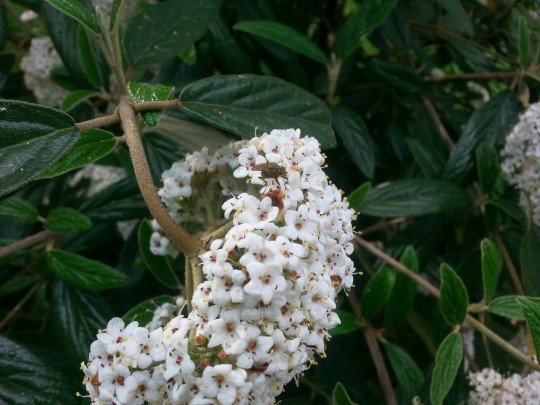
There were bees on this flower so I was going to get a photo for @khrysdiebee but then they flew away and were replaced by this Scathophagidae(?) For @morgandjackson
5 notes
·
View notes
Photo

#365Insects 115: #Sphinx perelegans Edwards, 1874 Unfortunately, due to circumstances beyond my control, this Elegant Sphinx Moth will be the final #365Insects entry for the foreseeable future. I'm disappointed to not have been able to highlight a full year's worth of biodiversity, but I've really enjoyed and valued the opportunity to discover more about the insects that we share our planet with in such a visual manner. Thanks to everyone who has been following along, and I'm sorry I won't be able to continue brightening your feeds with the 365 project. Hopefully it will live again another day, but in the meantime I'll continue to share entomological ideas, discoveries, and more. (at University of Guelph)
31 notes
·
View notes
Photo

#365Insects 114: #Arge coccinea (Fabricius, 1804) A specialist on sumac as larvae, this sawfly certainly lives up to its "scarlet" moniker. (at University of Guelph)
2 notes
·
View notes
Photo
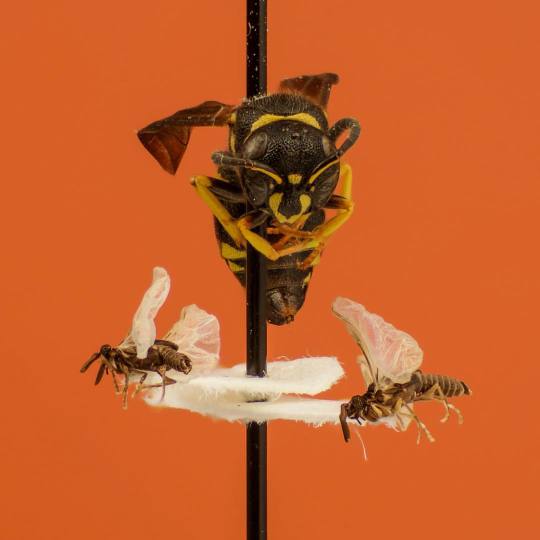
#365Insects 113: #Pseudoxenos tigridis Pierce, 1911 Another pin, another story. Here, the tale of a trio of weird parasites with twisted wings and peculiar habits along with their wasp host, #Ancistrocercus adianatus. The two winged males on points emerged from between the abdominal segments of this potter wasp, while their sister stays put inside her host in a sac-like adult form waiting for Mr. Right to come along and mate with her neck. Then, it's only a matter of time until her cute little larvae burrow out of her body in search of a host of their own. Ah, love in the time of #Strepsiptera! (at University of Guelph)
11 notes
·
View notes
Photo

#365Insects 112: #Mesovelia mulsanti White, 1879 Named in honour of Étienne Mulsanti, a French natural historian who studied everything from hummingbirds to #Hemiptera, including describing the genus #Mesovelia, this species is found from Canada to Argentina striding along ponds and lakes, and even salt marshes scavenging insect remains floating along. With ties to Europe, North, Central, and South America, as well as Pacific islands like Hawaii, this little bug makes for a good ambassador for World #HemipteraDay! (at University of Guelph)
1 note
·
View note
Photo

#365Insects 111: #Hemichaeta scutellata (Cresson, 1930) Today would have been German Dipterist and founder of modern phylogenetics Willi Hennig's 103rd birthday, and to celebrate, I thought I'd share a little story about how even great scientists make mistakes while they're starting out. In 1934, as an undergraduate research project, Hennig revised the family of flies that I specialize on, the #Micropezidae. In his earliest work, he drew attention to the uniqueness of this fly, putting it into a new subgenus he created for it & 3 other species. Unfortunately, being a young, green taxonomist, he failed to fulfill all the requirements to make a new name "official", and so it wasn't until another scientist came along 34 years later and finished the job that the name become official, and without Hennig's name attached. Through the course of my Master's research, it became apparent that this fly was unique enough to warrant a genus of its own, and so my advisor and I built off of Hennig's work, raising it up to stand on its own. Don't feel too bad for Hennig however; he would go on to (correctly) describe more than 50 genera and subgenera along with ~80 new species. (at University of Guelph)
4 notes
·
View notes
Photo

#365Insects 110: #Panagaeus cruciger Say, 1823 As an undergrad, Charles Darwin, who died on this day in 1882, was out collecting beetles one day when he came across 2 Ground Beetles which he collected, one in each bare hand. It was then that he spotted the rare #Panagaeus cruxmajor, a species very similar to this more common North American species. With both hands already full of beetles and a real prize sitting right before his eyes, Darwin popped a beetle from his hand into his mouth, and was reaching for the #Panagaeus when the beetle in his mouth expelled defensive chemicals, causing Darwin to spit it out, and losing all three of his prizes in the process. (at University of Guelph)
11 notes
·
View notes
Photo
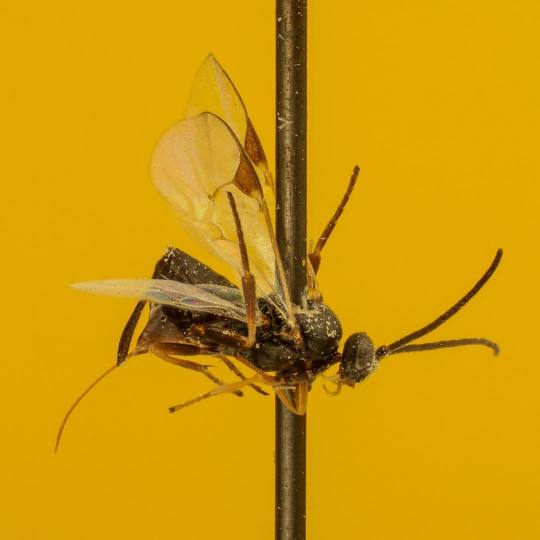
#365Insects 109: #Dolichogenidea cacoeciae (Riley, 1881) Although it looks like a piece of abstract entomological art, this is actually a member of the hyper-diverse family of parasitoid wasps, the #Braconidae. With ~17,000 species already described, and some estimates suggesting the real total may approach 50,000 species when all is said and done, there is much work for people like @ymilesz to do! (at University of Guelph)
1 note
·
View note
Photo

#365Insects 108: #Clinidium sculptile (Newman, 1838) The individual rounded pieces of the head exoskeleton, along with the deep grooves and rounded edges of the elytra sculpture make this Wrinkled Bark Beetle look like a porcelain anatomy sculpture to me. (at University of Guelph)
23 notes
·
View notes
Photo

#365Insects 107: #Chilacis typhae (Perris, 1857) You never know what you'll find in an insect collection: international travellers, local neighbours, or sometimes a little bit of both. This little Bulrush Bug, native to Europe but introduced to North America sometime in the 1970s or '80s, was collected across the street from my house in Guelph 23 years ago by a former student! (at University of Guelph)
0 notes
Photo

#365Insects 105: #Gasteruption assectator (Linnaeus, 1758) Although their larvae are predators or kleptoparasites of twig-nesting #Hymenoptera, the adults are pollen & nectar feeders, particularly on members of the #Apiaceae, giving them the peculiar common name of Carrot Wasps. (at University of Guelph)
47 notes
·
View notes